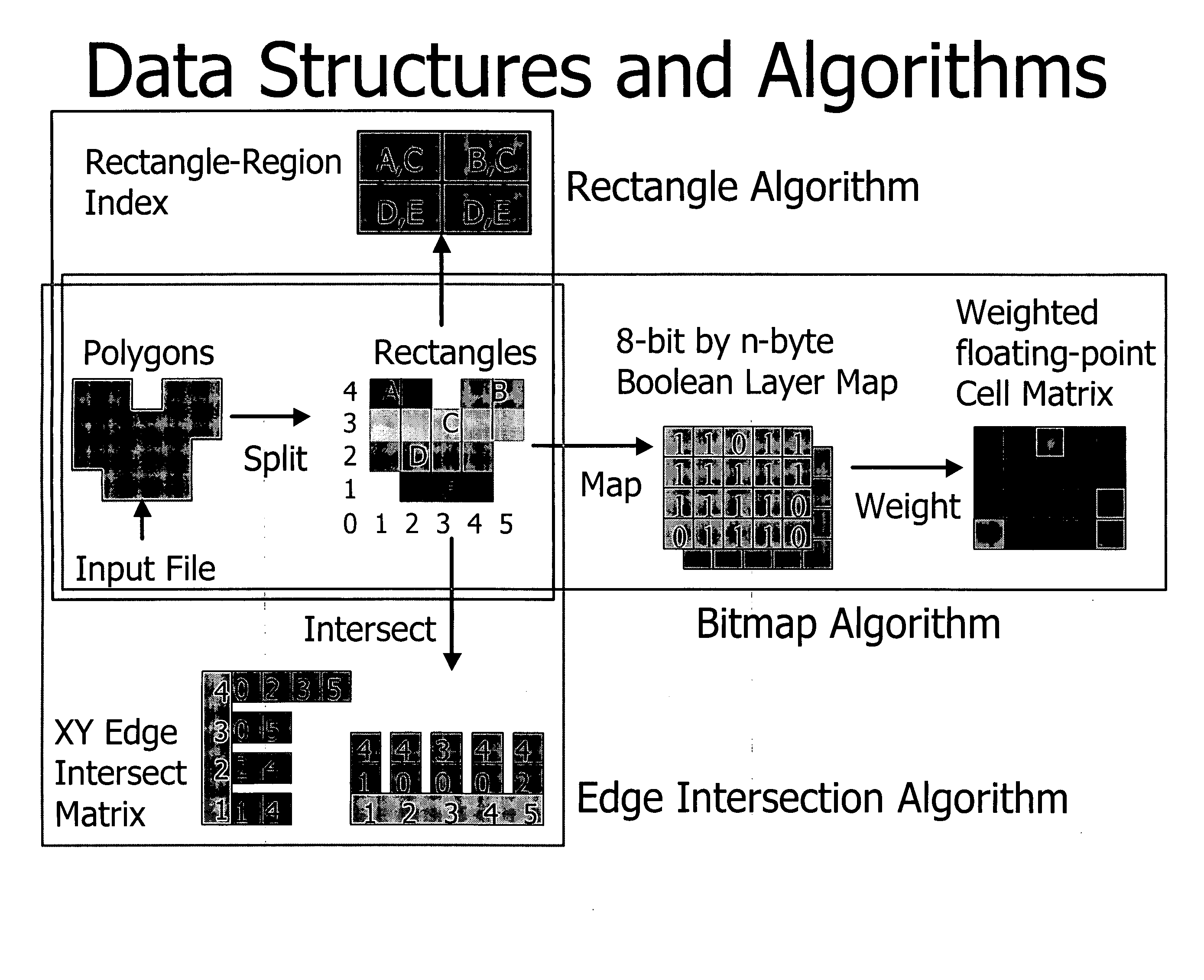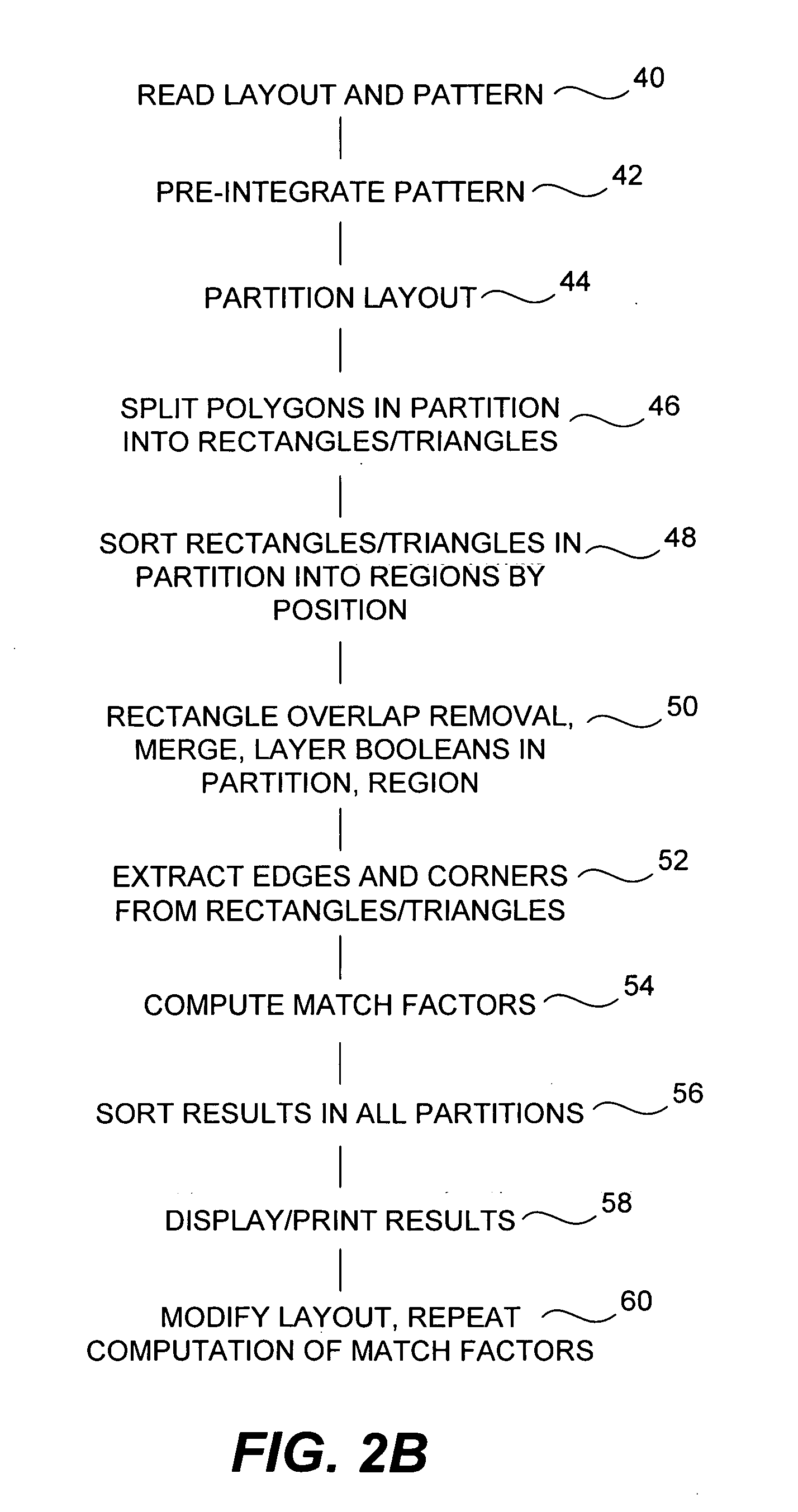Method of locating areas in an image such as a photo mask layout that are sensitive to residual processing effects
a technology of residual processing effects and mask layout, which is applied in the field of integrated circuit mask analysis and locating areas in masks, can solve the problems of reducing image quality, residual aberrations still contributing significant spillover, and affecting the projection printing of mask patterns in integrated circuit layout, so as to dramatically reduce reduce the use of runtime and memory. the effect of reducing the computational complexity of pattern matching
- Summary
- Abstract
- Description
- Claims
- Application Information
AI Technical Summary
Benefits of technology
Problems solved by technology
Method used
Image
Examples
Embodiment Construction
[0037] As the critical dimension in optical lithography continues to shrink and additional phases are added to masks, it is becoming more important to determine where the geometry is affected the most by non-ideal process conditions. If the most problematic shapes can be identified and represented in an unambiguous form, then these test patterns can be used to locate areas in any layout that are the most sensitive to these effects. After the ‘hot spots’ have been found, the designer can go back and alter the geometry to reduce the sensitivity to these effects. Alternatively, these locations can be recorded and later examined after fabrication as a way to narrow down mask inspection regions. Locations of interest can be filtered to edges, line ends, inside corners, and / or outside corners.
[0038] In accordance with one application of the invention, a software system analyzes a mask layout and searches for locations sensitive to residual processing effects. Pattern matching is used to ...
PUM
 Login to View More
Login to View More Abstract
Description
Claims
Application Information
 Login to View More
Login to View More - R&D
- Intellectual Property
- Life Sciences
- Materials
- Tech Scout
- Unparalleled Data Quality
- Higher Quality Content
- 60% Fewer Hallucinations
Browse by: Latest US Patents, China's latest patents, Technical Efficacy Thesaurus, Application Domain, Technology Topic, Popular Technical Reports.
© 2025 PatSnap. All rights reserved.Legal|Privacy policy|Modern Slavery Act Transparency Statement|Sitemap|About US| Contact US: help@patsnap.com



